
views
Be an active listener.

Active listening helps you learn new things and connect with people. When someone is speaking to you, give them your undivided attention. Listen without interrupting, forming snap judgments, or planning what you want to say next; just focus on understanding their words. Actively listening to others will make the conversation more engaging for both of you. Fully face the speaker and make eye contact with them. Show them you're listening by giving a small nod or making an "Uh huh," sound to encourage them to keep talking. If they're discussing a problem or concern, avoid inserting your opinions into the conversation unless the other person asks. Remember, they might not want you to fix their problems—they could be looking for a supportive ear. When you actively listen in a social situation, you're more likely to fully understand it and pick up on important social cues from the other person, thus increasing your social awareness.
Repeat and paraphrase what you hear.
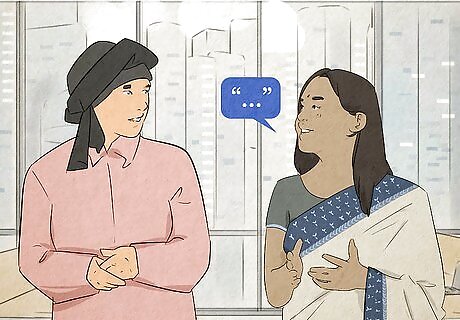
Repetition helps you absorb information and prove your attentiveness. When someone talks to you, hone your active listening skills even further by briefly recapping what they said after they finish speaking. Use your own words to describe what you just heard the other person say. This often helps both of you gain a greater understanding of the situation. For example, if your coworker says, "I'll never get this project done. It's never-ending," you could say, "Wow, you sound really overwhelmed!" This also helps you avoid miscommunications. If you paraphrase incorrectly, the speaker can easily let you know. For example, "No, I think I have control of the project. It's just taking forever to finish!" Try asking questions too. Ask the other person if there's something you don't understand, or pose a compassionate question like, "Wow, that sounds rough. Is there anything I can do?"
Watch facial expressions and body language.
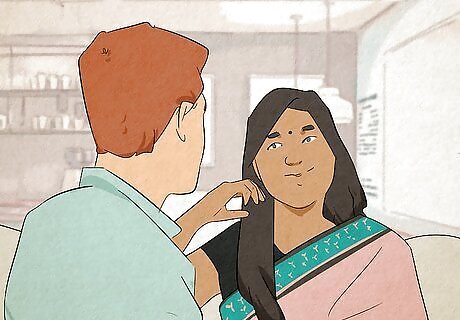
Gain insight into peoples' feelings by analyzing their nonverbal cues. Examine body language and facial expressions in social situations. Start by taking note of the other person's eyes, head movements, arm position, hand signals, and feet. Determine their general emotions based on those nonverbal cues. You can adjust your reactions once you know how a person feels. Study their eyes. Eye contact indicates engagement. Looking away could mean they’re bored or nervous. If their eyes crinkle when they smile, they're genuinely happy. Crossed arms are a sign of defensiveness, anxiety, and lack of vulnerability. A relaxed, open posture indicates confidence. People point their feet in the direction they want to go—so feet pointed at you means they probably like you. Hands in pockets indicate nervousness. Supporting the head with both elbows on the table signifies boredom. People also often gesture unconsciously towards people they like. Check if the other person's body mimics yours after a few seconds. People who want to be friends with you tend to mirror your movements.
Pay attention to tone of voice.
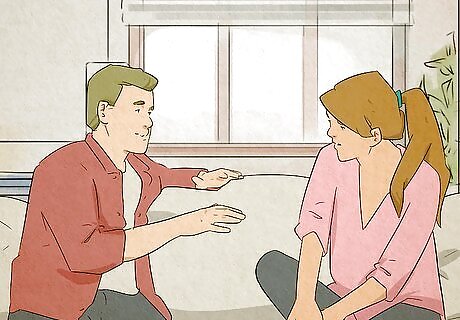
Someone's tone can help you figure out what they're really thinking. Voice tone conveys the emotion behind words; even speaking the same words with different tones would give your statement a different meaning. Start studying how a person's voice changes based on emotions and use those observations to identify emotions in other conversations. For example: If someone says "I'm fine" with a light, cheerful tone of voice, they're likely being genuine. However, if someone says "I'm fine" in a quiet, low voice, they could be sad or upset. Familiarize yourself with different tones by testing your tone of voice. Repeat a sentence while imagining you feel a different emotion each time. How does "You scared me!" sound when you're happy, shocked, angry, or sad?
Study how others react to you.

People's responses can help keep you aware of your behavior. Watch their nonverbal cues and listen to what they say so you can accurately read a situation. If someone reacts in a way you weren't expecting, or the atmosphere in a social setting changes rapidly, it might mean you've missed a cue. Consider the other person's responses to discover what happened. For example, someone who says, "That's great!" while slowly backing away probably doesn't want to chat at the moment. A person leaning toward you, smiling, and making eye contact is likely genuinely interested in what you have to say, so take it as a nonverbal cue to continue. Notice when people are just being polite and when they have a genuine reaction. If your coworker is asked to do some extra work and they agree while sighing or avoiding eye contact, this may be an act of polite obligation.
Analyze your social cues and reactions.

Knowing your social cues will help you spot them in other people. Think about how your body language and voice change when you feel happy, sad, angry, or excited. What do you look like or sound like? Record yourself acting out a few different emotions and watch the video. Once you understand how you react to different emotions, it'll be easier to read other people's reactions, too. If you're normally closed-off and don't display many emotions, make a conscious effort to be more open and honest about your feelings. Your emotions will be easier to analyze.
Demonstrate empathy and compassion.
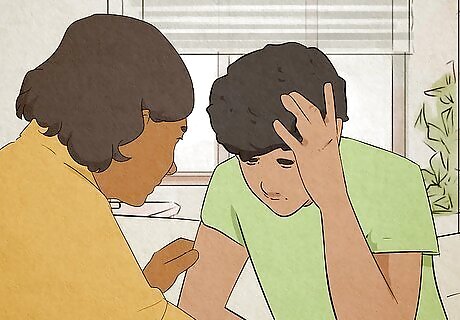
Put yourself in someone else's shoes to better understand them. Empathy is the ability to feel someone else's emotions. When you talk to other people, pretend that you're them. Think about how you'd feel and react if you were in their situation, then use your empathy to show compassion. After thinking about how the other person feels, consider what you can do to improve their situation. Demonstrate your empathy out loud. When you listen to someone, let them know (after they finish speaking) that you hear them and understand their feelings. For example: imagine your friend's relative passed away. If you've never had a loss like that, consider how it'd feel and respond the way you'd like someone to respond to you. You might say, "I'm so sorry. How are you doing?" Try reading books and collecting stories from people. Hearing other people's stories (fictional or real) helps us develop empathy because we're given a glimpse of what it's like to be that person.
Express gratitude to others.

Showing appreciation for people strengthens your connection with them. Another way to develop compassion is by recognizing and appreciating other people's strengths and efforts. Openly express your gratitude when someone helps you. Thank them and explain why you're grateful. Gratitude supports social communication while building up your empathy and ability to see other perspectives. For example, if a coworker tackles some work so you can leave early, be sure to recognize their good deed. You could say, “Thank you so much for doing that work! It was a huge relief. Let me know if I can return the favor.” Gratitude also improves your mental health and the happiness of the people around you. The more you practice it, the more you understand the social power of simply being kind to others.
Get in touch with your own emotions.

Self-awareness also raises your understanding of others. It's tough to understand what other people feel if you can't label your own emotions. Practice self-awareness by identifying your emotions. Share your thoughts with a trusted confidante so they can help give you clarity and feedback. Write in a journal regularly to reflect on events and your emotional reaction to them. Your inner thoughts can give you an indication of how you feel. For example, if you think, "I have so much to do. The house is a mess, and company is coming!" you're probably feeling stressed out. Try carrying a list of emotions with you. If you're new to identifying emotions, a comprehensive list of them might help you identify what you're feeling.
Take responsibility for your mistakes.
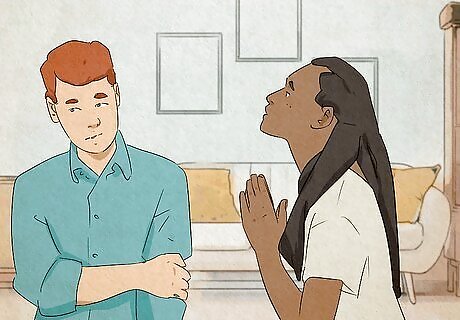
Taking responsibility helps you learn, correct yourself, and move forward. It's never fun to feel like you've hurt someone's feelings or annoyed them, but remember that mistakes are a part of life—everyone makes them. Rather than getting defensive, reflect on the problem to understand what went wrong. Determine what you can do differently next time once you know what happened and why. If you're unsure what mistake you've made, tell a trusted confidante what happened. They may be able to give you some extra perspective. If you've accidentally upset someone, offer them an earnest apology. Tell them you understand why they're upset and that you've learned from your mistakes. Remember to be kind to yourself. It's important to hold yourself accountable, but forgive yourself too. Mastering social awareness will take time, and it's natural to stumble a little in the process!
Educate yourself about diverse groups of people.

Understanding different cultural norms will help you socialize. It's easy to miss a social cue when you don't know it exists. If you have a diverse group of friends or coworkers (or you're just curious), study up on cultural norms from around the world. Pick a culture you find interesting and look up reliable books, websites, podcasts, and other learning materials. Your research will give you new insight into people's lives in that culture and increase your awareness of the problems they face.
Give back to your community.
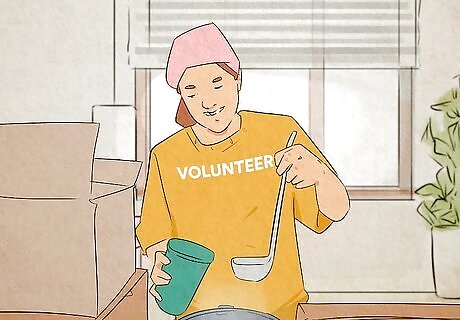
Community involvement will give you a higher level of social awareness. Get involved in your community through volunteer work or other service opportunities. Explore volunteering options in schools, cultural centers, political organizations, religious communities, or neighborhood activities. Find a position that requires you to listen to and tend to other people's needs. For example, working at a food pantry or soup kitchen can help you understand the needs and perspectives of people living in poverty. You could also visit elderly folks at a nursing home or tutor kids in an after-school program. Both positions would require you to assess peoples' needs and help them to the best of your ability!




















Comments
0 comment